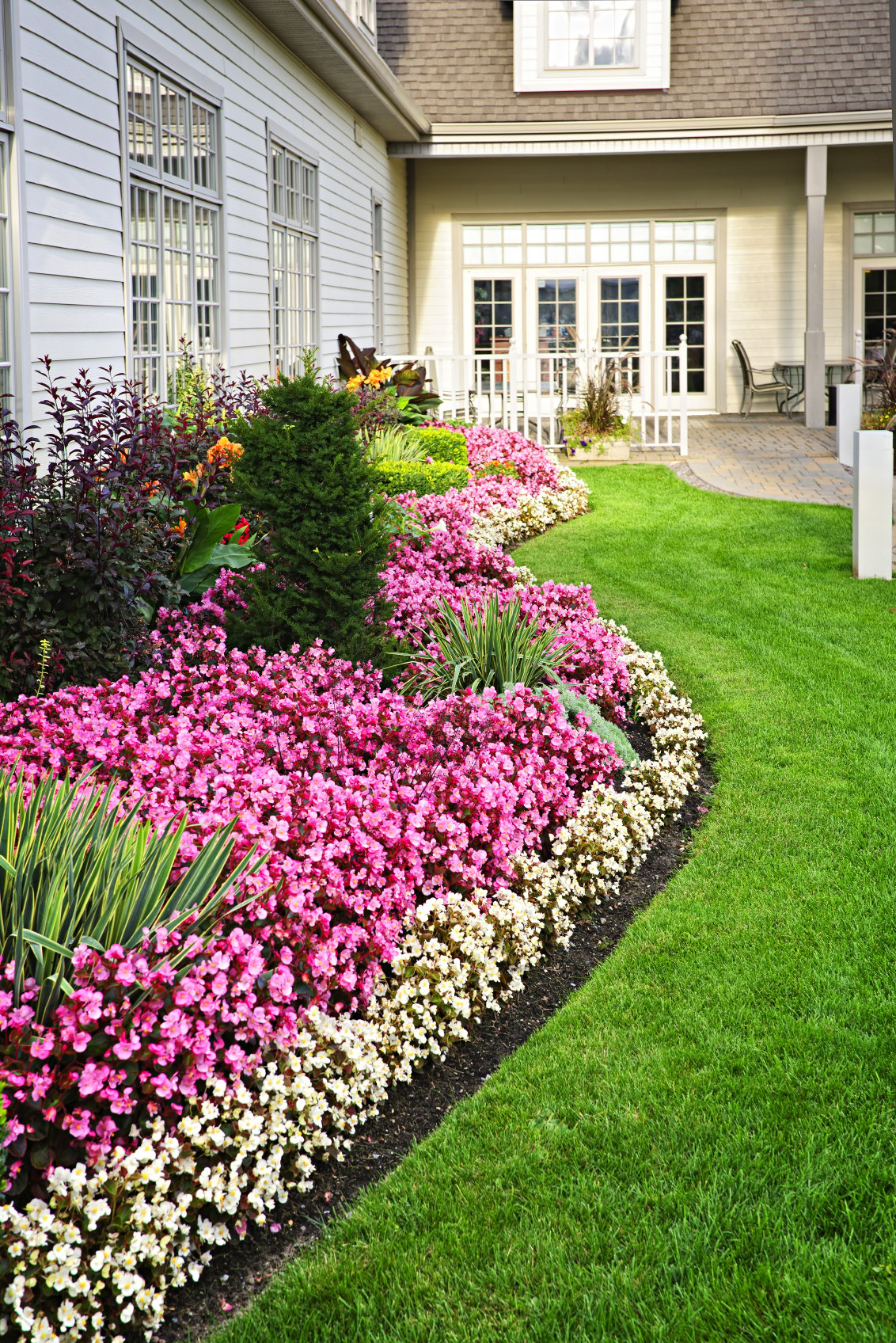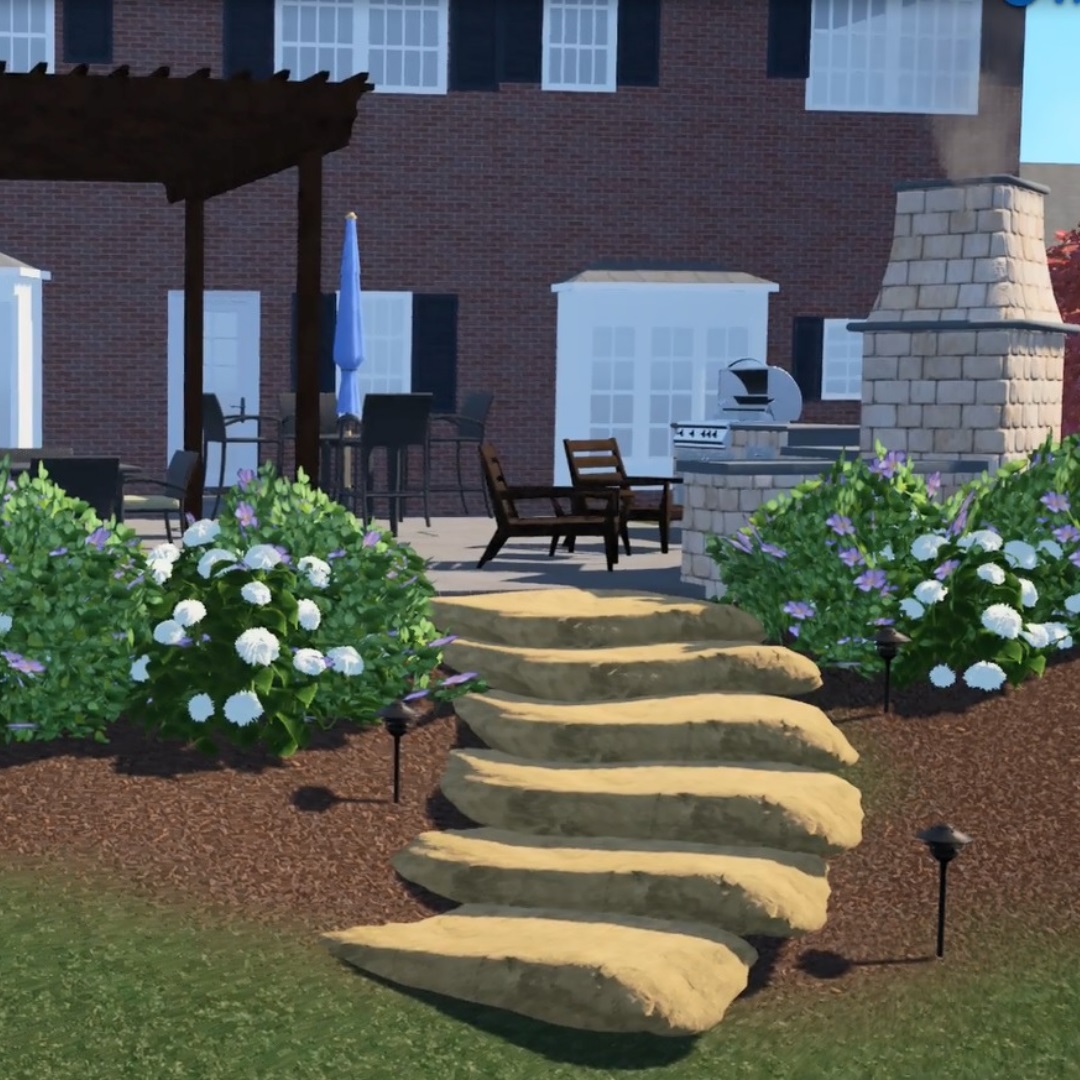Grill Islands That Combine Practicality, Aesthetics, and Longevity
Exploring Different Sorts Of Landscape Design to Boost Your Outdoor Setting
Landscape design plays an important function in specifying outdoor areas. Different designs, from traditional yards to modern-day minimalist designs, supply unique benefits for enhancing looks and function. Incorporating components like xeriscaping and indigenous plants can contribute to ecological balance. Understanding the interaction of hardscape and softscape is important for producing inviting environments. The selections readily available can be overwhelming, triggering one to review which style best aligns with their vision for an exterior sanctuary.
Conventional Yard Landscaping

While several modern-day gardens welcome minimalism and native growings, standard garden landscape design remains a cherished technique that stresses proportion, framework, and ornamental attributes. This design frequently incorporates formal geometric layouts, where paths, flowerbeds, and hedges are set up with accuracy. Central focal points, such as sculptures or water fountains, draw the eye and provide a feeling of harmony.Traditional landscape design frequently consists of a variety of plant types, showcasing seasonal flowers and evergreen elements. Traditional shrubs, perennials, and annuals produce vivid shades and textures throughout the year. Furthermore, arcs, pergolas, and trellises include upright interest and work as assistance for climbing up plants, enhancing the overall aesthetic.The use of natural products, such as stone and wood, more enriches the typical landscape, adding to a timeless high quality. Inevitably, this style invites relaxation and satisfaction, making it a beloved selection for those seeking an attractive outdoor environment.
Modern Minimalist Landscaping
Modern minimal landscaping emphasizes simpleness and functionality, identified by open spaces and clean lines. Secret features include a limited plant combination and thoughtful hardscape layout that focuses on use and visual appeal. Effective plant choice approaches even more enhance the minimal method, creating relaxing outdoor environments that motivate leisure and consideration.
Key Characteristics of Minimalism
An expanding pattern in landscape design is the welcome of minimalism, defined by simplicity and capability. Minimal landscape design concentrates on tidy lines, open spaces, and a limited shade palette, promoting a feeling of serenity. Components are meticulously curated to prevent mess, permitting each element to stand out. Making use of all-natural products, such as stone and wood, enhances the natural feeling while maintaining a visual balance. Furthermore, minimal layouts commonly incorporate geometric shapes, which can create visual rate of interest without overwhelming the detects. Water attributes might be included, acting as prime focus that improve tranquility. Generally, minimalism in landscape design emphasizes the elegance of restraint, allowing nature's inherent qualities to shine through in a harmonious exterior environment.
Plant Selection Techniques
Reliable plant selection is vital for achieving the preferred aesthetic in modern-day minimal landscaping. The focus must get on simplicity, utilizing a minimal palette of plants that enhance each various other and the surrounding setting. Native plants are often optimal, as they require much less upkeep and water, promoting sustainability. Selecting varieties with varying heights and structures can add visual passion without overwhelming the room. Organizing plants in collections rather than spreading them improves cohesion and enhances the minimal motif. Evergreen ranges can provide year-round framework, while seasonal blooms introduce refined color modifications. Eventually, the objective is to develop a tranquil exterior area that embodies peace and consistency via thoughtful plant choices.
Hardscape Style Principles
Essential elements in hardscape design considerably add to the general appearances and functionality of minimalist landscape design. This design strategy stresses tidy lines and downplayed materials, creating an uncluttered visual experience. Trick parts include paths, patios, and preserving walls, which not only specify areas however likewise enhance availability and use. Using materials such as concrete, stone, and timber prevails, mirroring an all-natural yet modern-day aesthetic. Integrating in proportion formats and geometric shapes even more enhances the minimal viewpoint, enabling a harmonious mix with bordering plant. In addition, proper water drainage and disintegration control are essential considerations, guaranteeing durability and sustainability. Ultimately, efficient hardscape style offers as a foundation that complements softscape aspects while preserving equilibrium and simplicity in exterior environments.
Cottage-Style Landscaping
Cottage-style landscaping supplies a fascinating technique to creating inviting outside rooms. By including enchanting plant mixes, this design fosters a sense of heat and fancifulness. The focus on comfy, well-defined areas urges leisure and enjoyment of nature.
Captivating Plant Mixes
Although lots of home owners seek to produce a stunning outdoor area, accomplishing the beauty of cottage-style landscaping often rests on thoughtful plant mixes. Dynamic flowers, lush vegetation, and fragrant herbs can be artfully coupled to stimulate a feeling of fancifulness and fond memories. Combining lavender, daisies, and foxgloves creates a vivid tapestry that attracts pollinators while supplying a wonderful fragrance. Including decorative yards like miscanthus can add texture and movement, matching the softer flowers. In addition, mixing perennial and yearly plants warranties continuous color throughout the seasons. The usage of mountain climbers, such as clematis or honeysuckle, can boost upright interest. On the try this website whole, these combinations not just improve the landscape however also foster a inviting and enchanting ambience.

Cozy Outside Rooms
Producing relaxing exterior spaces calls for a mindful mix of comfort and charm, matching the vivid plant mixes found in cottage-style landscape design - Outdoor Lighting Installer. These locations usually feature inviting seating setups, such as weathered wooden benches or cushioned chairs bordered by lavish plant. Soft illumination, like fairy lights or lights, adds heat, changing the area into a peaceful retreat. Integrating elements such as trellises adorned with climbing up roses or fragrant herbs enhances sensory experiences. In addition, paths made from rustic stones invite expedition and link with nature. Ornamental touches like birdbaths or wayward garden art add to a feeling of whimsy. Ultimately, the objective is to develop an enchanting atmosphere that urges leisure and enjoyment of the appeal surrounding these comfortable exterior places
Xeriscaping for Water Conservation
Exactly how can communities balance aesthetic landscaping with journalism need for water conservation? Xeriscaping becomes a practical option, promoting lasting methods that decrease water use while improving outdoor elegance. This landscape design technique concentrates on utilizing drought-resistant plants indigenous to the region, which require substantially less water than standard yards. By integrating mulch and effective watering systems, xeriscaping reduces dissipation and drainage, further preserving valuable water resources.Communities can create aesthetically appealing landscapes via mindful preparation, picking a varied range of textures and colors that prosper in dry problems. Furthermore, xeriscaping encourages making use of ornamental rocks and attractive crushed rock, providing functional and eye-catching options to yard lawns. As communities embrace this eco-friendly technique, they not only reduce their water consumption yet additionally advertise biodiversity and resilience in their regional environments. Ultimately, xeriscaping works as a presentation of the consistency between visual allure and environmental obligation.
Hardscape Layout Components
Hardscape design aspects play an important duty in boosting exterior spaces by offering framework and functionality. These non-plant functions, such as outdoor patios, walkways, decks, and wall surfaces, create visual rate of interest while serving useful purposes. Making use of products like brick, rock, and concrete, hardscaping adds to the overall aesthetic allure and resilience of a landscape.Incorporating hardscape aspects can define areas within a lawn, assisting motion and urging social communication. A well-placed path can link various this website areas of the yard, while maintaining walls can handle altitude changes and stop erosion.Furthermore, hardscape style can improve ease of access and safety, providing steady surfaces for walking or lounging. Effective assimilation of hardscape elements matches soft landscape design, making certain a well balanced outside environment. Inevitably, thoughtful hardscape design boosts not just the elegance of outside rooms yet additionally their functionality, making them extra inviting and practical for visitors and property owners alike.
Outdoor Living Rooms
While outside space supply a smooth blend of comfort and nature, they offer as necessary extensions of a home, boosting way of living and leisure. These areas can consist of outdoor patios, decks, or visit our website outside kitchens, designed to cultivate leisure and entertainment. Landscape Lighting Installer. By including useful furniture and trendy design, house owners create welcoming environments for gatherings or quiet evenings.The integration of color frameworks, such as awnings or pergolas, safeguards versus the elements while preserving an open feeling. Fire pits and exterior heating systems prolong usability into cooler months, offering warmth and setting. Additionally, incorporating lights functions improves the area's functionality after sunset, creating a magical night atmosphere.Landscaping aspects, such as borders and paths, even more specify these areas, guiding movement and including aesthetic charm. Ultimately, exterior space transform backyards into versatile resorts, advertising a way of life that accepts both nature and comfort
Native Plant Landscaping
Indigenous plant landscape design highlights using native plants to create harmonious and lasting outdoor environments. This strategy not only boosts biodiversity but also saves water and decreases the demand for chemical plant foods and chemicals. By picking plants that are native to a details area, homeowners can ensure that their landscapes are well-adapted to local soil and climate problems, resulting in lower maintenance requirements.Additionally, native plants provide essential habitats for local wild animals, consisting of , birds, and butterflies, promoting ecological health and wellness. Landscape develops that integrate these plants frequently feature naturalistic layouts that mimic regional ecosystems, promoting a local color and link to the environment.Furthermore, indigenous plant landscape design can contribute to dirt security and disintegration control, making it an eco accountable option. Generally, this technique not just enhances outdoor spaces but additionally supports the regional environment, developing a lasting equilibrium in between human activity and nature.

Regularly Asked Questions
Just How Can I Select the Right Landscaping Style for My Home?
Selecting the best landscape design design for a home involves reviewing the residential or commercial property's design, environment, and individual choices. Landscape Lighting Installer. Looking into various designs and consulting professionals can supply assistance to produce a harmonious outside room tailored to individual needs
What Is the Ordinary Expense of Specialist Landscape Design Solutions?
The ordinary price of professional landscape design services commonly varies from $1,000 to $5,000, depending upon project complexity, size, and area. Homeowners should consider getting several quotes to assure they obtain reasonable rates and high quality service.
Exactly how Frequently Should I Preserve My Designed Yard?
The frequency of preserving a landscaped lawn normally depends upon the plants and features present. Generally, routine maintenance every couple of weeks is advised, with seasonal tasks raising in frequency during top growing periods for suitable wellness and aesthetic appeals.
Are There Landscaping Alternatives for Tiny Urban Spaces?

Numerous landscape design choices exist for tiny metropolitan rooms, consisting of upright yards, container plants, and rooftop gardens. Integrating these components can make best use of limited locations while providing greenery, boosting aesthetics, and enhancing air top quality in urban environments.
What Plants Are Ideal for Attracting Neighborhood Wild Animals?
The very best plants for attracting neighborhood wildlife include native blooming varieties, berry-producing shrubs, and varied yards. These plants give necessary food and environment, cultivating a thriving ecological community that sustains numerous birds, bugs, and small animals. Numerous homeowners seek to create a picturesque exterior area, achieving the appeal of cottage-style landscape design frequently hinges on thoughtful plant mixes. Producing relaxing outside rooms needs a cautious mix of convenience and beauty, matching the vibrant plant mixes found in cottage-style landscaping. Indigenous plant landscaping highlights the usage of native plants to produce harmonious and sustainable exterior environments. Landscape develops that integrate these plants frequently include naturalistic formats that resemble regional ecological communities, promoting a sense of area and link to the environment.Furthermore, native plant landscaping can contribute to dirt security and disintegration control, making it an environmentally accountable option. Numerous landscape design alternatives exist for small metropolitan areas, consisting of upright gardens, container plants, and roof gardens.